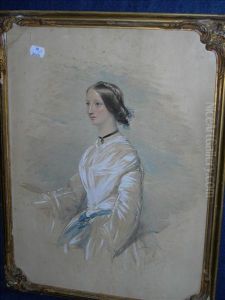Charles John Basebe Paintings
Charles John Basebe was a British artist born in 1810, during the period of the late Georgian era. He was primarily known for his work as a maritime painter, capturing the dynamic and often tumultuous scenes of naval life and seascapes. Basebe's work is characterized by its attention to detail, the accuracy in the representation of ships, and the dramatic rendering of the sea and sky.
Basebe's life and career were framed within the context of the 19th century, a period that saw significant changes in the art world, including the rise of Romanticism and the later advent of Impressionism. Much of Basebe's work, however, maintained a strong adherence to the traditional and realistic portrayal of marine subjects, which was more aligned with the tastes of the earlier part of the century and the lingering influence of Romanticism.
Despite the high quality of his marine paintings, Charles John Basebe did not achieve the same level of fame as some of his contemporaries. Nevertheless, his paintings did attract a certain level of patronage, allowing him to make a living from his art. His works were exhibited at institutions such as the British Institution and the Royal Academy of Arts, indicating his recognition within the art community of his time.
Basebe's dedication to marine painting contributed to the documentation of maritime history and reflected the importance of naval power to the United Kingdom during the 19th century. His paintings often depicted ships engaged in battle, merchant vessels, and scenes of everyday life at sea. These works not only provided a visual record of ship design and naval engagements but also captured the mood and atmosphere of the maritime experience.
Charles John Basebe passed away in 1880, leaving behind a modest but compelling body of work that offers insight into the maritime culture of his era. While he might not have been a leading figure in the art world, his contributions to the genre of marine painting have been appreciated by collectors and historians, particularly those with an interest in maritime history and naval warfare. His works continue to be of interest to those who value the intersection of art and history, providing a window into the naval life of the past.
